ATVs are most commonly known for their ability to climb over rocks and other rugged landscapes, making it possible for people to explore territory that would have previously been impossible to reach or which would have taken days to conquer on foot. However, while your ATV can climb over objects impressively, when you hit the accelerator, it can take a bit to get going fast if you don’t find a way to increase your torque.
How do you give an ATV more torque and horsepower? The best way to give your ATV more torque and horsepower is to turbocharge or supercharge the engine, which means that you are creating a path for more pressurized air to enter the engine. More air means more fuel is getting burned, so your ATV will be more powerful in a turbocharged state.
While a turbocharged engine will provide more torque and increased power, it will also decrease the efficiency of your ATV, meaning that more fuel will be required to make the engine operate. If you are willing to spend a little more on fuel in exchange for more engine power, then turbocharging your ATV might be a good idea.
Torque and horsepower are two common measures of engine performance that most people do not understand and often confuse. While they are closely related, they have some important differences that can be critical in helping owners decide how to care for and upgrade their ATV engine.
Torque is a measure of an engine’s ability to do work.
Most engines have to spin faster in order to increase torque. This explains why your vehicle’s RPMs increase when you go up a hill and decrease when you go down a hill: You require your vehicle to do more work when climbing, while you require it to do essentially no work when going downhill.
Vehicles that have a lot of torque will be able to perform this work at lower RPMs because high-torque engines will apply more twisting force to the crankshaft.![]() This is why some heavy-duty trucks are advertised as having “low-end torque”: They are capable of doing a lot of work, such as pulling heavy trailers, without substantially revving the engine.
This is why some heavy-duty trucks are advertised as having “low-end torque”: They are capable of doing a lot of work, such as pulling heavy trailers, without substantially revving the engine.
If you choose to increase the torque of your ATV’s engine, you can expect the following improvements:
Horsepower is a measure of how rapidly an engine can perform work.
Lightweight sports cars that operate at high RPMs will have high horsepower but low torque because they are doing little work at a fast rate.
The main advantage of increasing the horsepower of an engine is simple: you will be able to go faster!
Some may argue that turbocharging your ATV engine will do more for increasing horsepower than torque. While they are correct in the sense that turbocharged engines will go considerably faster than non-turbocharged engines, they ignore the fact that torque is a component of horsepower:
While they are correct in the sense that turbocharged engines will go considerably faster than non-turbocharged engines, they ignore the fact that torque is a component of horsepower:
(Torque x RPMs)/Constant = Horsepower
Because there is an upper limit to how fast an engine can spin, more torque means more horsepower at lower RPMs, which leads to faster speeds when the engine is spinning slower.
The best way to increase both torque and horsepower of your ATV is to turbocharge the engine.
Turbocharging means that more pressurized air is forced into the engine, which also means that more fuel is being burned. Putting in more air and fuel means that more power is being produced, which leads to the increased torque and horsepower of your ATV.
There are various ways that you can turbocharge your ATV’s engine, some of which are very simple, others that require the assistance of a professional mechanic to install a specialized turbocharging part.
The first step to moderately turbocharge your ATV engine and give it more torque is to check the air intake system. This starts with the air filter.
The airflow on a lot of small engines can be highly restrictive, and as air is necessary for engine combustion, reduced or restricted airflow can limit the amount of your ATV’s torque.
A dirty air filter on your ATV, combined with an already restrictive air intake system, may be preventing your engine from functioning at 100 percent capacity.
Therefore, the most basic step in turbocharging your engine is to thoroughly clean your air filter.
When cleaning your air filter, if you notice that it is unusually thick, you may want to consider modifying it or exchanging it for a model that allows air to move more freely. However, note the risk that accompanies this step, as an air filter that does not properly catch debris and allows foreign particulars to enter the engine’s combustion chamber could cause serious damage.
While basically all modern ATVs have fuel-injected engines, meaning that fuel is introduced directly to the engine’s combustion chamber, there is a chance that your older ATVs still use a carburetor.
The carburetor is the device that mixes air with fuel at the proper ratio and introduces it to the engine for combustion. If the carburetor is soiled or not functioning properly, the engine may be misfiring due to poor fuel quality, which will lead to decreased torque.
If your ATV uses a carburetor, drain the carburetor of all fuel and thoroughly clean the part. If you are not mechanically inclined, you may need to have a mechanic perform this step and/or replace the carburetor altogether.
While cleaning the air intake system may lead to only modest increases in torque, and your ATV is unlikely to use a carburetor, there is one surefire way to ensure that your engine gets supercharged: Add an ATV turbocharger.
A turbocharger is a specialized part designed for fuel injected engines that ensures that air is utilized most efficiently. It will more than likely require the assistance of a professional mechanic to add this part to your ATV’s engine block unless you know what you are doing.
If you can handle it yourself, you may get lucky and find a decent-priced turbo kit on Amazon.
In addition to adding pressurized air to the intake system, turbochargers also redirect exhaust gases, preventing the loss of power from air escaping through the exhaust pipe.
Turbochargers work by using small fans to redirect wasted heat and air back toward the engine. This increased air requires the introduction of more fuel to the engine, which allows the engine to operate more powerfully, leading to an increase in torque and horsepower.
This is an especially beneficial process because it allows for more torque to your ATV without having to upgrade the engine. This means the ATV will be the same weight as before, making the increase in power all the more noticeable.![]()
A turbocharger for your ATV will likely cost about $200, unless you can find a good deal. While the cost of having a mechanic install this part will seem high initially, it will be much more cost-effective than having a high-torque engine installed.
While improving the air intake on your ATV is the most surefire way of gaining torque, there are a couple of other ideas that may help increase engine power if you have already explored the above options or do not have the budget to get your ATV supercharged:
If you’re looking for ways to make your quad go faster, this is where you want to be. I will show you the most common ways riders make their ATVs faster, I’ll also offer some helpful tips along the way.
I will show you the most common ways riders make their ATVs faster, I’ll also offer some helpful tips along the way.
With more horsepower and torque, you will notice better acceleration and a higher top speed from your quad. But with the engine working harder, are these upgrades safe for your ATV?
Yes, they are. Anytime you ride your quad faster or harder than normal you are increasing the wear and tear that happens over time. You can limit these effects by performing routine maintenance though.
Be careful if you have factory warranty though. Many alterations will void a warranty, so first check to make sure if you don’t want your warranty to voided. If you do have a warranty, and want to keep it, it may be best to just not modify the machine at all until the warranty has expired.
Overall, these upgrades are considered safe and many riders have been making these changes to their quad for years and years. Lets start by looking at the easiest and cheapest ways to make your ATV faster.
A quick and easy change you can make, is to start using higher octane fuel. A lot of quads don’t require that you use higher octane fuel from the manufacturer, but it can help increase the performance of your engine.
If you can, don’t use ethanol based fuels and opt for the higher octane. It will cost a few more bucks than the cheap fuel, but you’ll certainly notice the difference when you hammer on the throttle.
Higher octane fuel burns cleaner, giving you better gas mileage and less corrosion to the mechanical parts of your fuel system. Sure the better mileage isn’t really noticeable in a quad, but the performance differences are there.
Sure the better mileage isn’t really noticeable in a quad, but the performance differences are there.
Some riders want even more of a boost than the fuel sold at a gas station, so they will add more octane to their fuel themselves. Here is a link to Boostane Professional Octane Booster on Amazon. This is one of the most popular and widely used octane boosters out there, but really any octane booster will work.
You can just add a little bit to the gas in your quad and mix it up a bit by rocking back and forth on the machine. I like to pre-mix it in a gas can before putting it in the gas tank, that way I can get the measurements exactly right.
You should be checking your air filter regularly and cleaning it when necessary. If the air filter starts getting clogged up, it will affect the amount of air the engine can use to run. Riding with a clogged air filter is almost like choking your engine. Check out this article on How To Properly Clean An ATV Air Filter if you need a guide.
A lot of riders will also upgrade their air filter to a lifetime replacement air filter like this K&N Replacement Air Filter on Amazon. Just make sure you type in your make and model and get the right one for your machine.
The increased air flow these filters allow will let your engine receive more air. More air fuel mixture means more power. This is one of the easiest ways to get more performance out of your machine.
On most ATVs, if you look on the right side of your handle bars where your throttle is, you’ll see a governor. On the governor, there will be a screw sticking out, that’s your throttle limiter. The throttle limiter will limit the amount of gas you can give your engine while riding.
Make sure the screw is turned all the way out, if you want to be able to give max throttle. To adjust this, simply loosen the lock-nut holding the throttle limiter screw in place, adjust the screw, and tighten the lock-nut back down.
A lot of people will screw the throttle limiter in if they have children that might be able to ride the machine. Double check the throttle limiter screw to make sure you’re getting the max your engine will allow.
Of course tire pressure will play a role depending on the type of terrain you’re riding in. When riding in sand or snow, a lower tire pressure will make you faster, but on flat hard surfaces, a higher tire pressure would help more.
I would suggest riding at around 5 psi as a good all around number. But to find an exact tire pressure for you and your terrain, check out my ATV Tire Pressure article where I go into a lot more detail about tire pressure and terrain differences.
As far as tire weight goes, you’ll really be looking at changing out the wheels to help with that. I mean sure, don’t expect big heavy mud tires to make your quad go faster, but really the biggest issue I see here is people with steel wheels.
You’ll want to get yourself some light weight aluminum wheels if you want to make your quad faster. A nice set of performance tires won’t hurt either. Tire size might make a difference too, depending on what you’re going for.
Check out these All Terrain ATV UTV Tires made by SunF here on Amazon if you’re in the market for tires. Make sure to get the right tire size for your ATV and your rims.
If you want faster acceleration, go with a smaller tire. If you want more top speed, go with a larger tire. Tire size is very similar to changing out your sprocket for gearing. A larger tire will take more power to turn it, but will cover more ground per revolution. I usually don’t change the tire size unless I am trying to Increase My ATV Ground Clearance.
Adding a nitrous kit to your ATV can give you a good boost of speed when you really need it. They aren’t really all that hard to install or use either. Sure every machine is different, and you’ll want to get a setup you feel safe with. But a lot of people have getting some extra speed this way.
But a lot of people have getting some extra speed this way.
There are a few different types of nitrous setups you could go with, for example, wet or dry. To learn more about nitrous check out my How And Why To Use Nitrous On An ATV article. In that article I walk you through the process so you can decide if it’s right for you.
Upgrading the exhaust on your ATV can get expensive and require some work. But it’s a sure fire way to increase the performance of your quad. With more air being able to leave the engine, it can pull more air in. This setup is great to do in parallel with a high flow air intake system.
If you can’t afford to do the entire exhaust system from the headers on down, you could always get a performance slip-on exhaust. This won’t increase horsepower as much as an entire performance exhaust system will, but it will give you a bit more horsepower.
Here’s an example Performance Exhaust System For A Honda TRX 300EX to give you an idea of what you’ll need.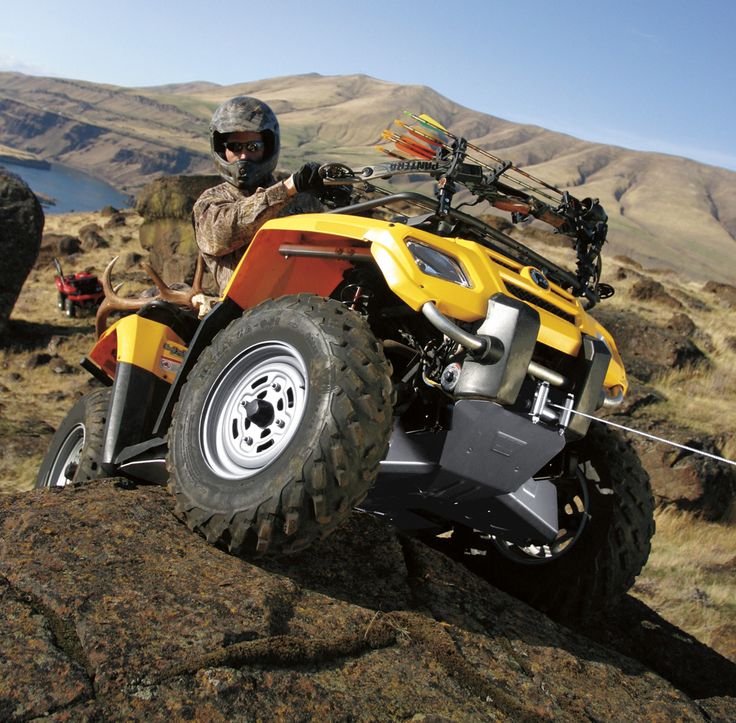 You are looking for a kit that has the exhaust parts coming from the engine all the way to the muffler and exhaust tip.
You are looking for a kit that has the exhaust parts coming from the engine all the way to the muffler and exhaust tip.
Usually the performance exhaust systems will be a bigger diameter than stock, or will be cone shaped to increase in diameter slowly. This allows more airflow through the engine. With more air fuel mixture, you will feel more power and speed when riding.
To change the gear ratio you would need to buy a new front or rear sprocket and replace your existing one. A lot of riders do what is called ‘gearing down’ which is when you get a larger rear sprocket to increase acceleration. This will cause your top speed to drop though. To learn more about gear ratio and how to adjust yours, check out my Complete Gear Ratio Guide.
To ‘gear up’ you would get a smaller rear sprocket which will increase your top speed but decrease your acceleration. You can find most sprocket sizes front and back online now for a pretty good price.
The thing you have to decide is, do you want an acceleration increase or a top speed increase. I don’t typically mess with the gearing of my quads, but I have for particular ATVs that I only ride through trails and never reach top speed. In those cases, gearing down makes sense to give you a quicker jump from the start.
If you decide you want to change a sprocket to adjust your gear ratio. I wrote an article with step by step instructions for you, showing you exactly How To Change The Chain And Sprockets On An ATV.
Installing a big bore kit can be a lot of work, but will give you a huge boost in performance. Acceleration will be quicker and top speed will increase as well. You’re basically upping the cc of your engine.
With most big bore kits, you will be replacing the piston and the cylinder with a larger size. This allows for more air fuel mixture to enter the combustion chamber resulting a huge performance boost to your quad.
Here’s an example Big Bore Kit For A Honda TRX 400EX on Amazon to give you an example of what you’re getting yourself into. You will most likely get all the piston rings and gaskets needed to do the swap with any decent kit.
There you have it, the most common ATV upgrades to increase performance and get some more speed out of your machine. If you’re looking for the cheapest and easiest way to increase performance, I would suggest checking your limiter screw, upgrade to a K&N air filter, use octane booster, and get a slip-on performance exhaust.
Even though you could make all these adjustments to your quad, a lot of riding faster has to do with skill. When you’re racing on track, being able to brake and corner properly is a big deciding factor in most races. Check out my How To Corner On An ATV and How To Brake Properly On An ATV articles to get some tricks and tips on how to ride better.
As always, wear proper safety gear when riding, especially if you’re modifying your quad for speed. To check out some safety and riding gear that I’ve tried and tested for you, visit the Recommended Gear section of this site.
To check out some safety and riding gear that I’ve tried and tested for you, visit the Recommended Gear section of this site.
Sharing is caring!
Contents
Increase the power of the motor!
Ways to increase motor power can be divided into "surface" and "global methods".
Surface methods for increasing the power of the motor, as a rule, do not require a major reconstruction of the unit, but only involve the refinement of its individual parts.
Global methods involve a major change in the motor, which needs special, professional intervention.
The first option to increase the motor power. This method belongs to the category of “surface” methods of influencing the engine, ”and its essence is to reduce the resistance of the air flow entering the fuel supply system. In general, instead of a conventional air filter, filters are installed, as they say, of "zero resistance", thereby ensuring that the air flow enters the engine's combustion chamber with the least loss.
The second option to increase the motor power. Its essence is to accelerate the emission of exhaust gas from the engine combustion chamber. This is achieved by replacing the "stock" exhaust manifold with a manifold, popularly called the "spider". "Spider" refers to a certain type of exhaust manifold.
Traditionally, along with the "spider", for greater performance, use a straight exhaust pipe, which is called "route" or "forward flow". A “route” is a channel for moving the flow of exhaust gases, made of a pipe with a diameter slightly higher than the diameter of a conventional exhaust line, starting from the “spider”, and, bypassing the resonator with a silencer, ends exactly at the place of this silencer. The existing highway, of course, is removed. It should also be said that when using the first two ways to increase engine power, you provide the engine of the car with a device that allows you to save gasoline.
A “route” is a channel for moving the flow of exhaust gases, made of a pipe with a diameter slightly higher than the diameter of a conventional exhaust line, starting from the “spider”, and, bypassing the resonator with a silencer, ends exactly at the place of this silencer. The existing highway, of course, is removed. It should also be said that when using the first two ways to increase engine power, you provide the engine of the car with a device that allows you to save gasoline.
The third option for increasing engine power is to increase the supply of fuel to the combustion chamber of the engine. This method can significantly add power to the engine, but the disadvantage is an increase in fuel consumption. Its essence is to increase the fuel jets (in carburetor-type engines) or “flashing” the injector (for injection engines) - “chip tuning”.
This method, as practice shows, negatively affects the working life of the motor, and in this case, it is worth forgetting forever about increasing the life of the motor.
The fifth option for increasing engine power is to increase the compression ratio within the combustion chamber of the engine. To increase the efficiency of the use of fuel mixtures, increase the compression ratio within the combustion chamber. A similar effect is achieved when the surface of the cylinder heads is modified, while reducing the combustion chamber.
Also, in order to increase the engine power in this way, the "cams" on the camshaft of the cylinder heads are processed so that the duration of the opening of the intake valve of each cylinder becomes longer, thus ensuring that the fuel mixture enters the engine combustion chamber in a larger amount. This method allows you to significantly increase the power of the engine, while ensuring a noticeable reduction in fuel costs.
Source
ATV chip-tuning is a recalculation which controls ignition, fuel supply and other parameters. The process can be compared to reinstalling the operating system on a computer.
The process can be compared to reinstalling the operating system on a computer.
There are 6 main goals:
On atmospheric engines, which are put on ATVs, the increase in power after chip tuning is on average 5-10%. But it can be more if the performance of the motor is reduced for marketing purposes - so that ATVs of different prices are not the same in power.
Factory firmware allows the engine to work stably regardless of temperature and air pressure on fuel of any quality allowed by the manufacturer. But the mixture in the cylinders is poor - so that less fuel burns and, accordingly, there are fewer harmful emissions into the atmosphere. This is necessary to comply with environmental regulations. To prevent detonation due to a lean mixture, that is, ignition by a shock wave and rapid combustion of fuel, the manufacturer makes the ignition timing late.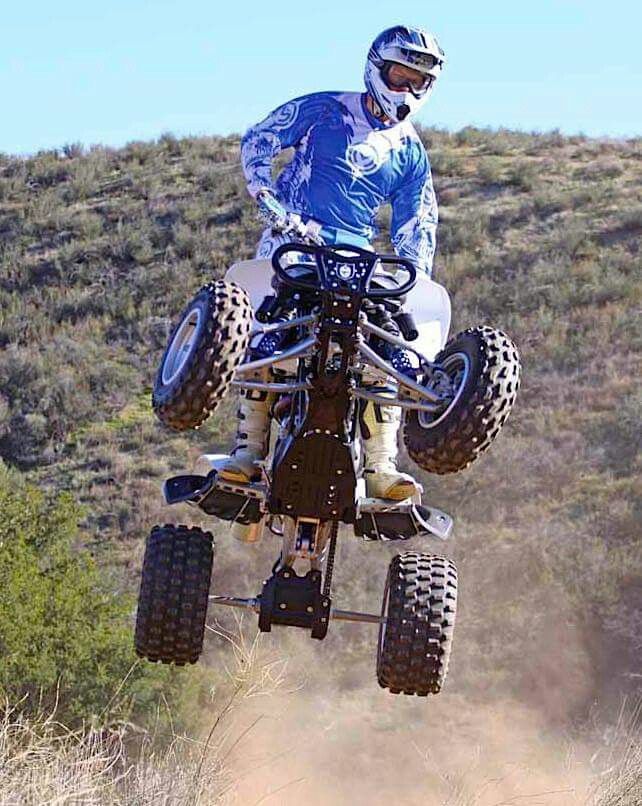 This negatively affects the dynamics, but allows the engine to run on a lean mixture.
This negatively affects the dynamics, but allows the engine to run on a lean mixture.
After chip tuning, the mixture becomes 3-10% richer and allows the engine to get more power, and earlier
ignition angles speed up the cycle speed. Due to this, the torque increases and shifts to a lower range, traction increases, the risk of detonation is reduced, and the engine works with less load. That is, competent chip tuning does not reduce the life of the engine. The transmission will also be in order - an increase in power of 5-10% will not affect it. At the same time, it should be borne in mind that working at high speeds always has a bad effect on the durability of the motor - regardless of whether chip tuning has been done or not.
First you need to pay attention that the mixture burns out gradually. Accordingly, it is impossible at one moment to obtain the maximum pressure in the combustion chamber and force the piston to move down immediately after the spark plug has sparked. Therefore, in order to achieve the best engine performance, it is necessary to make the ignition early - so that at the right moment after the piston passes TDC (top dead center), the pressure is maximum. At the same time, the quality of gasoline affects the combustion rate: fuel with a high octane number burns more slowly and is more resistant to detonation. Those. 92 gasoline will burn faster than 95, and not vice versa.
Therefore, in order to achieve the best engine performance, it is necessary to make the ignition early - so that at the right moment after the piston passes TDC (top dead center), the pressure is maximum. At the same time, the quality of gasoline affects the combustion rate: fuel with a high octane number burns more slowly and is more resistant to detonation. Those. 92 gasoline will burn faster than 95, and not vice versa.
Late ignition is set on the factory firmware. This is necessary so that the maximum pressure in the combustion chamber is not formed before the piston is at TDC. Otherwise, detonation may occur. After chip tuning, the ignition becomes earlier and, accordingly, if you continue to fill in gasoline with a low octane number, the risk of detonation increases. Therefore, after flashing, it is usually recommended to use 95 gasoline.
It is also possible to calibrate taking into account the fact that the ATV only runs on 92 gasoline. But the increase in power after chip tuning in this case will be less.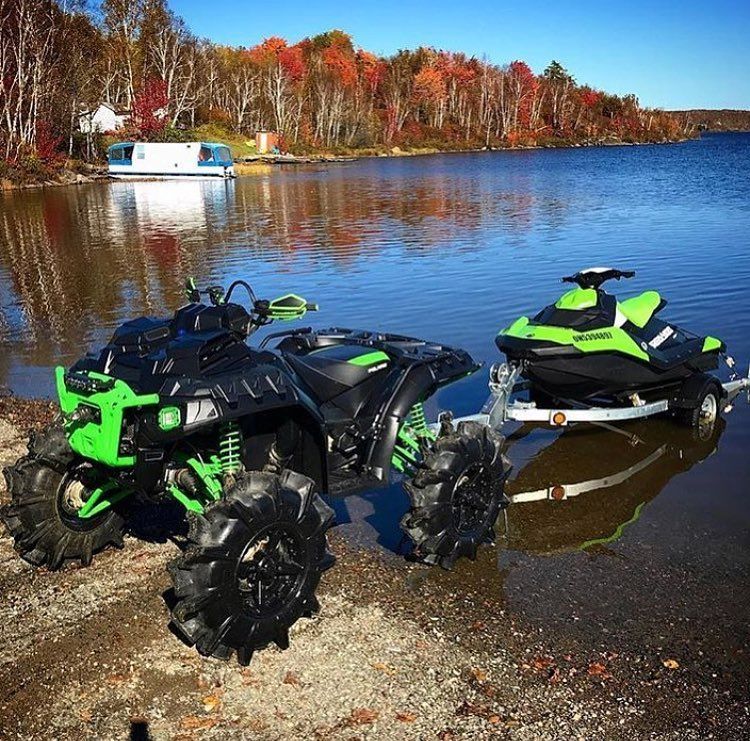
How chip tuning will affect fuel consumption depends on the driving mode. When the engine is running in the high speed zone, the consumption will be greater, since the amount of fuel burned has increased due to the fact that the mixture has become richer after flashing. In addition, the power has increased.
When the engine is running in a quieter mode, consumption may decrease - because the torque after the chip tuning increases and shifts to a lower range, it becomes easier for the ATV to overcome a hill or other obstacle without downshifting.
Before chip tuning, diagnostics are carried out in order to avoid deterioration of the engine. For example, flashing can be harmful if one of the injectors delivers more fuel than needed, or there are cracks in the exhaust manifold. Both malfunctions lead to excessive enrichment of the mixture. Because of this, the combustion rate worsens, consumption increases, the piston wears out, the oil liquefies and the engine overheats. If, in the presence of such engine breakdowns, chip tuning is done, it will only harm, because one of the goals of flashing the ECU is to increase the fuel content in the mixture.
If, in the presence of such engine breakdowns, chip tuning is done, it will only harm, because one of the goals of flashing the ECU is to increase the fuel content in the mixture.
Chip-tuning makes the engine more responsive to gas, increases power and torque, allows the ATV to “pull from the bottom” more confidently. The resource of the nodes does not decrease, and the fuel consumption will depend on the driving mode. Before flashing the ECU, diagnostics are required - it is possible that the ATV has malfunctions that will only get worse due to calibration.
Source
Almost every ATV (motorcycle) owner at least once in his life thought about how to increase the power of his vehicle.
Undoubtedly, any ATV owner who practices an active driving style wants to have a powerful engine under the hood of his ATV (UTV), which is also capable of withstanding huge loads. There is a way out and this is engine tuning (and not only). But it is worth remembering that it is not enough to have only a powerful engine, it is also necessary to strengthen other units (transmission, brake system, suspension, etc. ).
).
It's no secret that there are whole legends and myths about engine power. Most ATV enthusiasts are arguing about this, but few people seriously think about how much tuning can cost, and not many people think about why such ATVs are built in general and how to properly operate them. Some ATVs want to get everything at once and for 1 cent, as they say, naturally this does not happen. The concepts of "expensive" or "cheap" are quite relative, but high-quality tuning has never been available to everyone, for a number of reasons. You just need to understand that any improvements and any tuning costs some money. The final cost includes not only the price of the work, but also the prices for tuning components, as well as delivery from the USA (do not forget that we are in Russia), respectively, the components are transported across the border, for this there are certain terms and delivery conditions.
The specialists of our moto service recommend to start with determining the purpose for which the ATV will be used (for example, these are track days), or the ATV for serious off-road competitions, then it is logical to make a sufficiently powerful ATV, for example, over 80 H. P., but do not forget such an ATV will be quite “capricious” » in operation. Either you are ready for the fact that such tuning involves certain costs, or you are not ready.
P., but do not forget such an ATV will be quite “capricious” » in operation. Either you are ready for the fact that such tuning involves certain costs, or you are not ready.
Naturally, before any tuning, it is necessary to consult with Dynojet specialists, who will select the best options for tuning the ATV.
Our motorcycle service offers the best “ready-made” tuning solutions from top-level tuning manufacturers, tested in the most extreme conditions for the fastest and most powerful production ATVs. Preparation of ATVs and motorcycles and any other equipment for the track and various competitions, with subsequent maintenance.
It should be noted that any reconstruction of the engine, aimed at improving performance, is primarily a complex work. At the same time, you must clearly understand what you want to get from the ATV. At first glance, it seems that there is nothing easier than increasing engine power, but you cannot do without certain knowledge and skills in this process.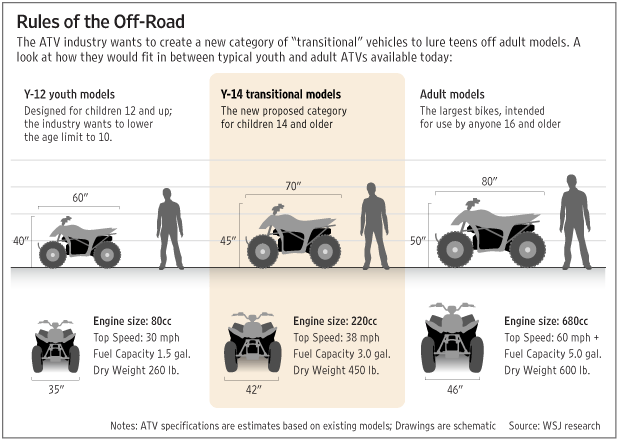 In addition, any improvements have many nuances. The main characteristics of the engine are primarily torque and power, which is what most ATV owners will try to improve by resorting to engine tuning. So, let's take a closer look at the engine tuning process.
In addition, any improvements have many nuances. The main characteristics of the engine are primarily torque and power, which is what most ATV owners will try to improve by resorting to engine tuning. So, let's take a closer look at the engine tuning process.
Many are beginning to wonder what torque boost is. Please note that the torque does not depend on the frequency with which the crankshaft rotates, but depends only on the engine size and the pressure created in the engine cylinders. There are no questions about the engine size, because everyone knows perfectly well that the larger it is, the better. As for the pressure, it can be increased by increasing the compression ratio.
Displacement expansion is the most reliable option for increasing engine power, but do not forget that all work must be done within reason. This option is perfect for utility ATVs, as the driver does not have to learn a new driving style, and after such procedures, engine power will be increased. The increase in volume can be done in two ways, this is either replacing the crankshaft, or you can resort to boring the cylinders. If we turn to what is the volume of the engine, then we can safely say that this is the product of the piston area and its stroke.
The increase in volume can be done in two ways, this is either replacing the crankshaft, or you can resort to boring the cylinders. If we turn to what is the volume of the engine, then we can safely say that this is the product of the piston area and its stroke.
Other problems arise, such as mechanical losses in the engine caused by shorter connecting rods. What is their downside, you ask? It has been proven that the shorter the connecting rod, the greater the angle it "breaks", and this in turn causes a greater force of pressing the piston against the cylinder wall. Please also note that the reliability of the engine will decrease, as short connecting rods become unusable quickly enough.
With regard to increasing the volume of cylinders, this method is the most cost-effective. The fact is that the cylinders have rather thick walls, and after they are bored, the working volume increases.
The second way to tune the engine is to increase the power. It is achieved by shifting the torque to the high-speed zone, while the power, of course, increases. Please note that with such a change, the driver may experience some discomfort, because normal engine operation is possible only at high speeds. At low RPMs, the engine will not scavenge, and when you step on the gas, the ATV will not accelerate effectively. This method of engine tuning is not suitable for utility ATVs, since high speeds are achieved only when driving on an open section of the road.
Please note that with such a change, the driver may experience some discomfort, because normal engine operation is possible only at high speeds. At low RPMs, the engine will not scavenge, and when you step on the gas, the ATV will not accelerate effectively. This method of engine tuning is not suitable for utility ATVs, since high speeds are achieved only when driving on an open section of the road.
Modern production makes it possible to improve ATV engines every year, and if we take into account variable valve timing, then thanks to special control mechanisms, these phases become narrow at low speeds. First of all, this allows you to fill the cylinders as fully as possible, and the engine will work evenly.
It should be noted that there is another way to increase engine power, which is a direct reduction in mechanical losses. It is achieved by reducing the mass of pistons and connecting rods, as well as the thickness of the piston rings. But these operations will be felt only at high speeds, when there is a significant loss of oil and fuel.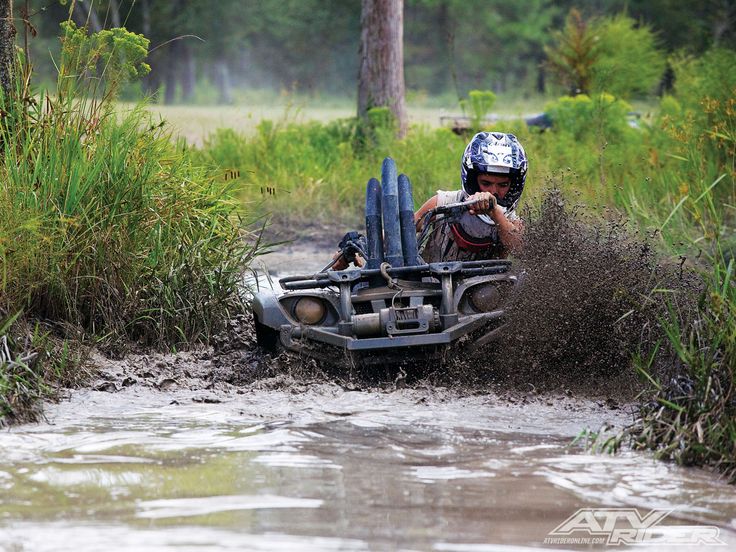 If you decide to tune the engine, then you should not forget about the environment in which the ATV will be used.
If you decide to tune the engine, then you should not forget about the environment in which the ATV will be used.
Source
Upgrading an ATV is an exciting process. Therefore, many decide to perform all the actions on their own, because there is nothing complicated in this . The main thing is to understand which elements of the ATV need pumping.
Owners of utility models of ATVs are trying to expand the functionality of their vehicle. Most often, improvements are carried out in the field of the following systems:
In addition to the above approaches to do-it-yourself ATV tuning, there are several more important actions that can improve the technical and external qualities of the vehicle.
Another important modification of the ATV is the installation of a winch. This accessory is sometimes able to save the vehicle by freeing it from a swamp or a large hole. Manually perform this procedure is not possible due to the high weight of the ATV. The winch will allow using the transmission mechanism to rescue the ATV from the off-road “traps”.
Manually perform this procedure is not possible due to the high weight of the ATV. The winch will allow using the transmission mechanism to rescue the ATV from the off-road “traps”.
If you plan to use the vehicle for commercial purposes, it is recommended to install hitch . It will be possible to attach a trailer to it, in which it will be possible to transport a load weighing up to 500 kg, as well as various equipment for tillage. This, for example, can be a plow or a harrow.
If you plan to operate the ATV in the winter, it is recommended to perform a number of modifications. You need to start with the wheels. 9 is installed on the device0161 winter tires , which is characterized by a special tread pattern and rubber composition. The tires have special studs to keep the ATV stable on ice or packed snow. Instead of wheels, caterpillars can be installed, which will significantly increase the off-road patency of the equipment.
If the ATV is used for snow clearing in winter, snow plow must be fitted to it. This will allow during the snowfall to clear the paths on the plot and next to it.
For handles and seat, it is recommended to build heating system . This significantly increases the comfort of the driver when driving in the cold season.
To change the appearance of the ATV and also improve riding comfort, you can install the following components:
Some drivers change the appearance of their ATV with interesting stickers . You can choose a standard version or order a special design that will carry some important information for the driver. There are many options for decorating a vehicle. Cheap stickers can be found on aliexpress.
Tuning a sports quad bike is a bit different than a utility ATV. First of all, the owner of such a vehicle must install off-road tires . To do this, choose rubber with an aggressive tread. Tire diameters may be the same or larger.
To do this, choose rubber with an aggressive tread. Tire diameters may be the same or larger.
To increase the cross-country ability, it will be necessary to strengthen the suspension, as well as the drive. This can be avoided by using 27 inch tires. Recommended at the same time change and disks. It is better that they are cast, made of light alloys. In this case, the weight of the ATV itself will be less, and this will have a positive effect on handling and speed.
To increase the power of the ATV, the Federal Tax Service and a special exhaust are installed. The carburetor engine is equipped with special jets . For an injection engine, self-tuning is very difficult and is usually trusted to specialists.
Source
SHUT UP! Cheap! Angrily!
Atrocious tuning and stunt on a teenager's ATV.
8 Ways to INCREASE motorcycle engine power
Increasing cubic capacity on Chinese engines
Increasing power of BALTMOTORS 500 EFI
Intake manifolds. Tuning potential. Where does POWER come from?
Tuning potential. Where does POWER come from?
10 ways to INCREASE ENGINE POWER
Making 140 cubes out of 50, mega moped tuning, engine tuning for all the money, PART 1
Modernization and refinement of the ATV 125cc. MonsterTruck - Rocket.
Why the children's ATV DOES NOT DROP. 3 main solvable reasons.
Chip-tuning of the ABA (EBU) which controls ignition, fuel supply and other parameters. The process can be compared to reinstalling the operating system on a computer.
There are 6 main goals:
On atmospheric engines, which are put on ATVs, the power increase after chip tuning is on average 5-10%. But it can be more if the performance of the motor is reduced for marketing purposes - so that ATVs of different prices are not the same in power.
But it can be more if the performance of the motor is reduced for marketing purposes - so that ATVs of different prices are not the same in power.
Factory firmware allows the engine to work stably regardless of temperature and air pressure on fuel of any quality allowed by the manufacturer. But the mixture in the cylinders is poor - so that less fuel burns and, accordingly, there are fewer harmful emissions into the atmosphere. This is necessary to comply with environmental regulations. To prevent detonation due to a lean mixture, that is, ignition by a shock wave and rapid combustion of fuel, the manufacturer makes the ignition timing late. This negatively affects the dynamics, but allows the engine to run on a lean mixture.
After chip tuning, the mixture becomes 3-10% richer and allows the engine to receive more energy, and the earlier
ignition timing speeds up the stroke speed. Due to this, the torque increases and shifts to a lower range, traction increases, the risk of detonation is reduced, and the engine works with less load. That is, competent chip tuning does not reduce the life of the engine. The transmission will also be in order - an increase in power of 5-10% will not affect it. At the same time, it should be borne in mind that working at high speeds always has a bad effect on the durability of the motor - regardless of whether chip tuning has been done or not.
That is, competent chip tuning does not reduce the life of the engine. The transmission will also be in order - an increase in power of 5-10% will not affect it. At the same time, it should be borne in mind that working at high speeds always has a bad effect on the durability of the motor - regardless of whether chip tuning has been done or not.
First you need to pay attention that the mixture burns out gradually. Accordingly, it is impossible at one moment to obtain the maximum pressure in the combustion chamber and force the piston to move down immediately after the spark plug has sparked. Therefore, in order to achieve the best engine performance, it is necessary to make the ignition early - so that at the right moment after the piston passes TDC (top dead center), the pressure is maximum. At the same time, the quality of gasoline affects the combustion rate: fuel with a high octane number burns more slowly and is more resistant to detonation. Those. 92 gasoline will burn faster than 95, and not vice versa.
Those. 92 gasoline will burn faster than 95, and not vice versa.
Late ignition is set on the factory firmware. This is necessary so that the maximum pressure in the combustion chamber is not formed before the piston is at TDC. Otherwise, detonation may occur. After chip tuning, the ignition becomes earlier and, accordingly, if you continue to fill in gasoline with a low octane number, the risk of detonation increases. Therefore, after flashing, it is usually recommended to use 95 gasoline.
It is also possible to calibrate taking into account the fact that the ATV only runs on 92 gasoline. But the increase in power after chip tuning in this case will be less.
How chip tuning will affect fuel consumption depends on the driving mode. When the engine is running in the high speed zone, the consumption will be greater, since the amount of fuel burned has increased due to the fact that the mixture has become richer after flashing.